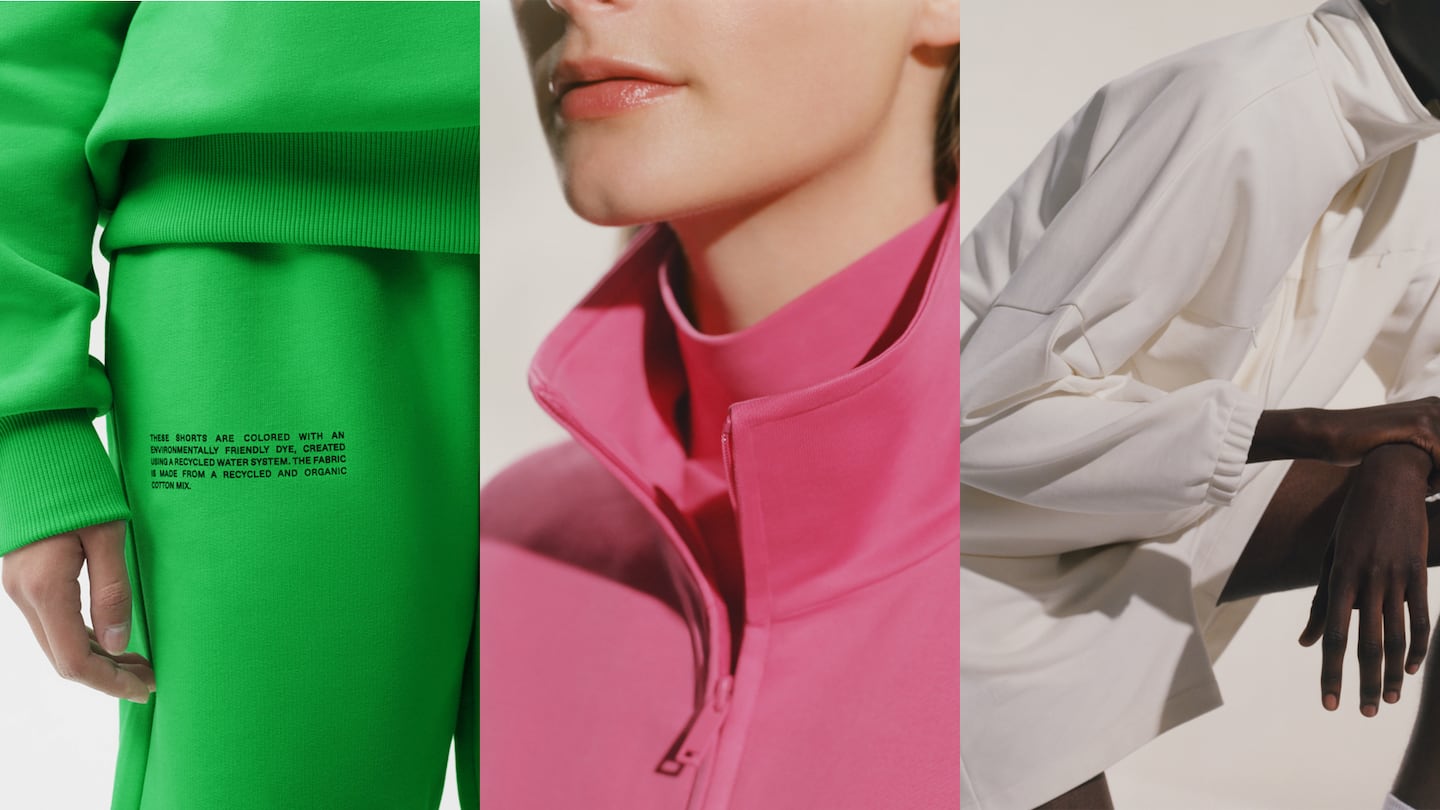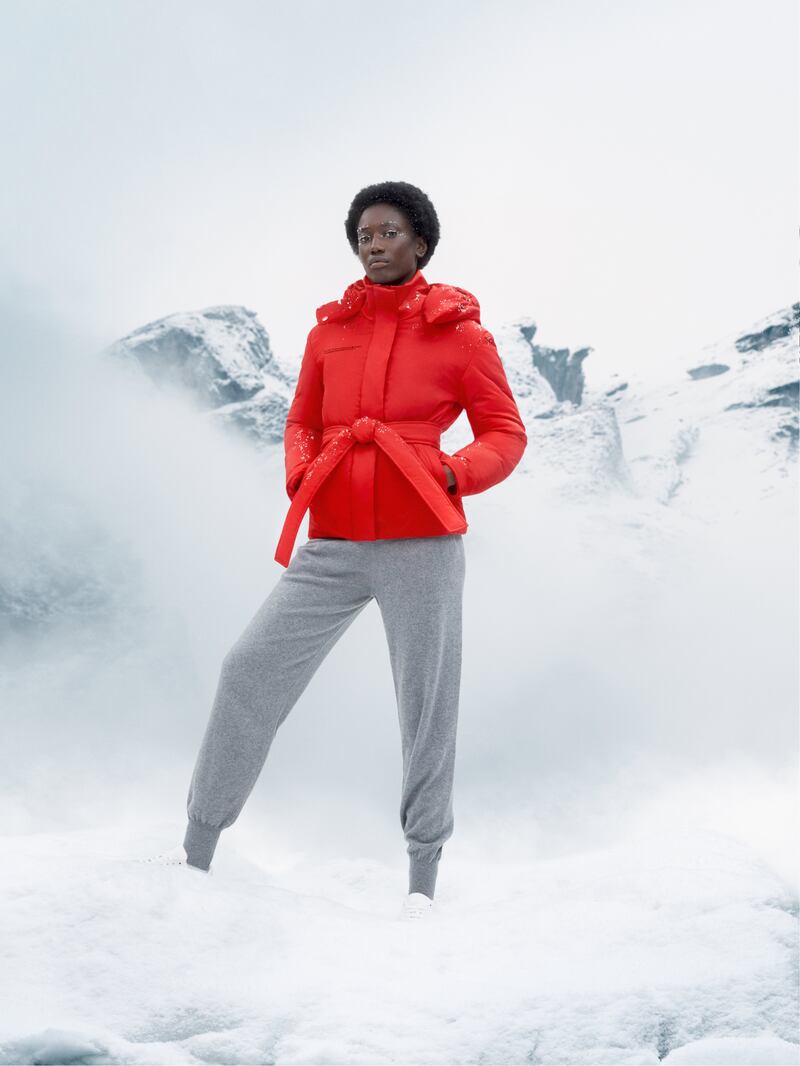
The Business of Fashion
Agenda-setting intelligence, analysis and advice for the global fashion community.

Agenda-setting intelligence, analysis and advice for the global fashion community.

Pangaia had a good year. The self-styled materials science company emerged as a pandemic wunderkind thanks to its brightly-coloured $120 sweatpants and $130 sweatshirts, a favourite of celebrities and influencers that became ubiquitous across social media, driving $75 million in revenue in 2020 while staying profitable.
The latest iteration of a sustainable brand in the vein of Everlane, Allbirds and Reformation, Pangaia promises consumers a purpose beyond its branded sweats.
For Pangaia, that’s in the form of its fabrics: a series of patented and trademarked sustainable materials, produced by its own in-house research and development team. The company hopes that those fibres will soon be another stream of revenue for the company through a business-to-business model that will provide its materials to other brands.
With a founding team that includes fashion heavyweights Miroslava Duma, who rose within the fashion industry as an influencer, and Jasmine Mullers, previously of Bottega Veneta and Valentino, along with Future Tech Lab alums Nathalie Longuet and Amanda Parkes, Pangaia has ambitions to move beyond the pandemic uniform it helped to define.
ADVERTISEMENT
The company first unveiled its products — seaweed fibre T-shirts, recycled cotton hoodies, caps and its first patented material, an alternative to a traditional down fibre, called Flwrdwn — in 2018 at Complex’s annual convention Complexcon. But it only officially incorporated in the UK in September 2019 as Pangaia Materials Science Limited. The first iteration of its tracksuit came to market in 2019, followed by colourful monochrome options in early 2020.
People perceive us as a loungewear, tracksuit-type company but that’s not where we’re going to stay forever.
Over that period, the company has grown from just 10 employees to 125 in the last year and is hiring seasoned senior executives, who spoke to BoF in an exclusive interview to share the company’s growth strategy.
“It’s been a very targeted process,” said Eva Kruse, senior vice president of brand and impact, who joined the company in 2021 from Global Fashion Agenda, where she spearheaded the organisation’s efforts to create a more sustainable fashion industry. “People perceive us as a loungewear, tracksuit-type company but that’s not where we’re going to stay forever.”
The brand isn’t alone in its plans: hundreds of labels have surfaced over the past few years promising a new vision of sustainability through their products. Few have reached the same level of early success as Pangaia. But whether it can carry this momentum beyond its initial offering and successfully grow its business-to-business model after a blockbuster year remains to be seen.
Post-Pandemic Growth
Pangaia believes its technology is its key asset, aiming to pioneer a range of alternative materials that are more environmentally friendly than traditional textiles. Similar to other brands in the space, Pangaia also promotes a slew of other initiatives and funds dedicated to offsetting its environmental impact and increasing consumer goodwill, from planting trees to compostable packaging.
Pangaia didn’t fully plan for sweatsuits to become the company’s hero product, but instead a marketing tool for its B2B offering.
“In the beginning, the idea was to showcase some of those materials more as proof of concept,” said Kruse.
ADVERTISEMENT
Like most Pangaia products, the sweatsuits feature a short description of the processes and materials the company employs in their making — from a leather alternative derived from grapes to peppermint infused clothing meant to stay fresh for longer — written in a small, sans-serif font on the outside of the garment.
But after its first monochrome, colour-coordinated sets hit the market in early 2020, they were followed by several sell-out collections as consumers stayed indoors and on social media. In the fiscal year of 2020, Pangaia’s Instagram following increased by 100 times to over 800,000 followers, enabling the company to reach over 130,000 customers.

Thanks to the success of its sweats, Pangaia is now able to invest in what it originally viewed as its core business: materials research and development. The hope is the business-to-business side, soon to be overseen by former Kering executive Christine Goulay as director of B2B, will drive the company’s growth in a post-Covid-19 world.
“Pangaia is on the cusp of a new gold rush,” said fashion intellectual property expert and director of the Fashion Law Institute at Fordham Susan Scafidi. “It’s not a philanthropic sideline but a new revenue stream for companies.”
The benefits are twofold: a patent allows the company to license its technology to third parties which creates an additional revenue stream, while a trademark ensures that, if the technology proves successful, companies could advertise the materials being used, increasing Pangaia’s power as a textile provider.
Materials like Gore-tex, Lycra and Nylon all led to larger innovations — and lucrative partnerships — within the fashion space; Pangaia is hoping to reach similar breakthroughs through sustainable alternatives.
For Pangaia, there’s still a ways to go before B2B success. There are no current partnerships and no products with its materials are yet on the market. A Pangaia spokesperson stated that it is currently in talks with roughly 30 brands, but declined to reveal the nature of the partnerships or expected timelines for signing agreements.
Integrating a new fibre, material or technique into a company’s supply chain is costly and time-consuming. Many companies recovering from the past year of supply chain disruptions and economic fallout are unlikely to have the capital to sustain costly transitions or risk bringing new materials and products to market.
ADVERTISEMENT
This is a shift in the primary locus of the value of a company, expanding the IP portfolio beyond trademarks to include patents.
However, Pangaia is well-positioned: co-founder Miroslava Duma’s venture Future Tech Lab, an incubator for sustainable materials and an investor in Pangaia, has a force in the market, backing MycoWorks, a startup that produces leather alternatives (and recently partnered with Hermès) and Bolt Threads, a MycoWorks rival that works with Stella McCartney and Kering.
Highlighting materials over products may also make Pangaia an asset ripe for acquisition, added Scafidi, comparing the company’s current offerings to the strategy employed by American Apparel.
“A large company can go shopping for a patent portfolio,” she said. “This is a shift in the primary locus of the value of a company, expanding the IP portfolio beyond trademarks to include patents.”
The Transparency Trap
While Pangaia has reached profitability early in its development, there are still hurdles ahead. Much of its demand has come from consumers spending on sweats instead of occasion wear and “going-out clothes,” a trend set to reverse as lockdowns ease and billions of people are let back into the world to socialise. Google searches for sweatpants have plummeted since December.
Once their key product is maxed out, how do they pivot?
That success hasn’t been replicated elsewhere in its business, despite expansion into other categories like down jackets, notebooks, dresses and skirts.
“Once their key product is maxed out, how do they pivot?” said retail consultant Gurki Basra. “These brands are going to face quite a challenge when things open up.”
To capitalise on the rise of post-lockdown revenge shopping, the brand has debuted footwear with a line of sneakers and slippers and has plans for bags and more activewear products. “Obviously you’re afraid that you’re a trend,” said Kruse.
It’s expanding beyond clothing, too: Ira Laufer, previously the chief executive of Just Water has joined as chief executive of a new vertical exploring food and skincare options.
Successfully diversifying also relies on developing physical stores. While Kruse said the brand has no plans to enter wholesale, it is set to enter a partnership with Selfridges for a temporary in-store experience on April 12.
There’s also the issue of continuing profitable growth as a company scales. The company’s B2B business will take time to grow, requiring in-depth sales expertise and full integration before it can show it has legs.
And there is the risk that comes with building a company based on the values of sustainability and transparency, particularly one rapidly expanding into new categories and products. In the past year, several progressive brands including Everlane and Reformation, have come under fire for offences ranging from racism to union-busting.
Pangaia’s message and marketing make it vulnerable, especially given Duma’s involvement. In 2018, Duma was removed from the board of children’s company The Tot and Buro 24/7 for racist and transphobic comments which spread on social media.
While Kruse and Parkes both declined to comment specifically on Duma’s role, they both emphasised the brand’s transparency and honesty in communicating with consumers.
Pangaia investors Carmen Busquets, co-founder of Net-a-Porter, and Brent Hoberman, co-founder of accelerator Founders Factory, cited Duma’s involvement in Pangaia as a key asset.
I’m struggling to find out exactly what makes what it is they do so revolutionary.
“Miroslava regrets her comments and has publicly apologised,” said a spokesperson for Pangaia in a statement. “Since the incidents, she has committed herself to a journey of personal growth and true allyship.”
The brand will also have to contend with sceptics within the space, particularly surrounding its sustainability efforts.
“I think it’s too easy for new brands to get caught up in this sustainable world of marketing,” said sustainability expert Emma Hamilton-Foster. Several of the materials issued, Hamilton-Foster notes, rely on technology and processes that have already existed within the space. “I’m struggling to find out exactly what makes what it is they do so revolutionary.”
The brand has yet to offer full supply chain traceability or disclosures on emissions and wages across the supply chain, something that Pangaia stated it’s working on for the future.
“There is no 100 percent sustainable,” said Kruse. “All we can do is be humble and honest, even honest about the things that we’re not perfect at.”
Related Articles:
Fashion’s New Materials Frontier
Chasing The Holy Grail of Circular Fashion
Fashion’s Growth-Focused Business Model Is Not Sustainable. What’s the Solution?
Antitrust enforcers said Tapestry’s acquisition of Capri would raise prices on handbags and accessories in the affordable luxury sector, harming consumers.
As a push to maximise sales of its popular Samba model starts to weigh on its desirability, the German sportswear giant is betting on other retro sneaker styles to tap surging demand for the 1980s ‘Terrace’ look. But fashion cycles come and go, cautions Andrea Felsted.
The rental platform saw its stock soar last week after predicting it would hit a key profitability metric this year. A new marketing push and more robust inventory are the key to unlocking elusive growth, CEO Jenn Hyman tells BoF.
Nordstrom, Tod’s and L’Occitane are all pushing for privatisation. Ultimately, their fate will not be determined by whether they are under the scrutiny of public investors.